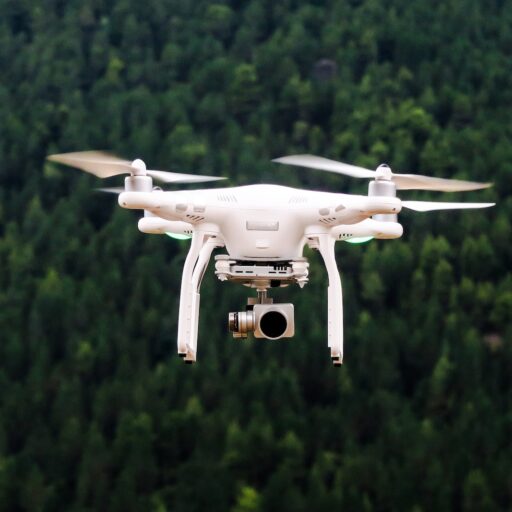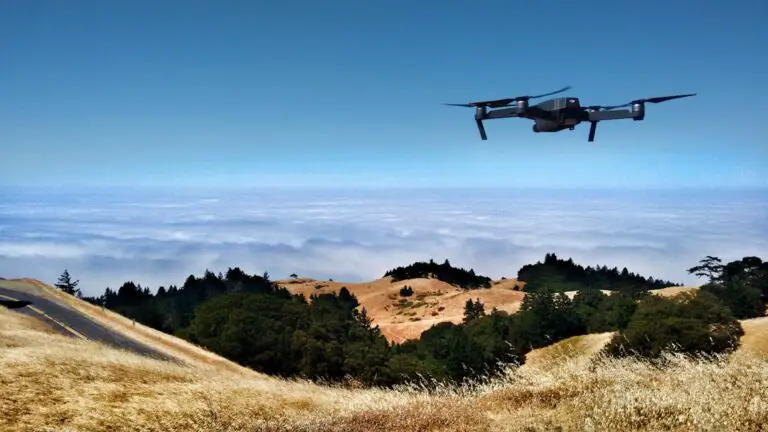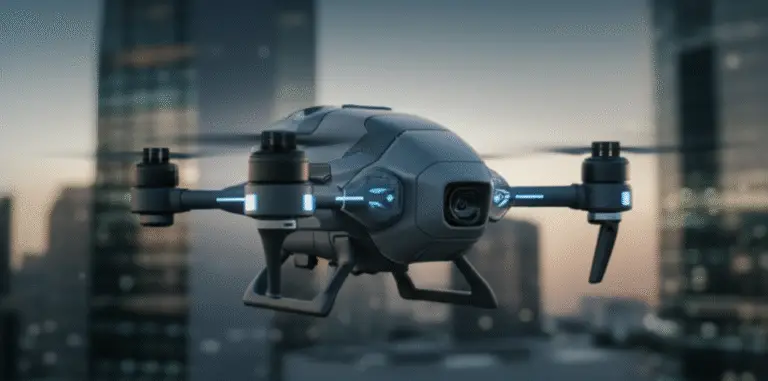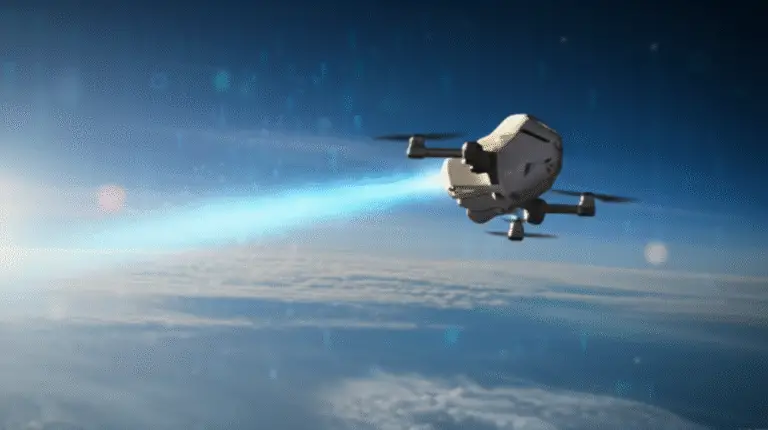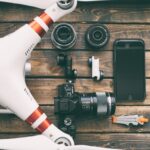Support our educational content for free when you purchase through links on our site. Learn more
Who Are the 9 Leaders in Military Drone Technology? 🚀 (2025)
Military drones have transformed the battlefield in ways few could have predicted just a decade ago. From nimble quadcopters providing frontline reconnaissance to jet-powered autonomous wingmen flying alongside fighter jets, the landscape of military drone technology is vast, complex, and fiercely competitive. But who exactly are the trailblazers shaping this high-stakes arena?
At Drone Brands™, we’ve piloted countless drones and tracked the industry’s biggest players. In this article, we unveil the top 9 leaders in military drone technology—from pure-play innovators like AeroVironment and Kratos to defense giants like Northrop Grumman and Lockheed Martin. Plus, we explore how AI, swarming tactics, and counter-drone defenses are rewriting the rules of modern warfare. Curious about which companies are powering the future of aerial combat? Stick around—we’ll also reveal how global players like Turkey’s Baykar and Israel’s Elbit Systems are changing the game.
Key Takeaways
- Pure-play manufacturers such as AeroVironment, Kratos, and Red Cat lead with specialized tactical and jet-powered drones that redefine combat roles.
- Defense primes like Northrop Grumman, Lockheed Martin, and Boeing integrate drones into broader military ecosystems, leveraging vast resources and R&D.
- Subsystem innovators like L3Harris and Mercury Systems provide critical sensor, communication, and AI technologies that make drones smarter and more reliable.
- Counter-UAS specialists including DroneShield and Leonardo DRS develop cutting-edge defenses against the growing drone threat.
- Global innovation hubs span from the EU’s coordinated programs to Israel’s combat-proven UAVs and Turkey’s disruptive Bayraktar TB2.
- AI and swarming technologies are the future, enabling autonomous, networked drone operations that can overwhelm traditional defenses.
- Ethical and legal challenges remain a hot topic, especially around lethal autonomous weapons and meaningful human control.
Ready to explore the leaders shaping military drone technology? Check out our detailed profiles and insights below!
👉 Shop Military Drone Tech & Components:
- AeroVironment Tactical Drones: Amazon | AeroVironment Official
- Red Cat Teal Drones: Amazon | Red Cat Official
- FLIR Thermal Cameras: Amazon | Teledyne FLIR Official
Table of Contents
- ⚡️ Quick Tips and Facts About Military Drone Technology
- 🚀 Evolution and Milestones in Military Drone Development
- 1. 🏆 Top Pure-Play Military Drone Manufacturers Leading the Skies
- 2. 🔧 Key Military Drone Technology Enablers and Subsystem Innovators
- 3. 🛡️ Counter-UAS Technology Leaders: Defending Against Drone Threats
- 4. 🌐 Diversified Defense Primes with Major Military UAV Programs
- 5. 🌍 Global Landscape: How Different Countries Shape Military Drone Innovation
- 6. 🔍 Cutting-Edge Military Drone Technologies: AI, Swarming, and Beyond
- 7. 📈 Market Trends and Future Outlook for Military Drone Technology
- 8. 🕵️♂️ Ethical, Legal, and Strategic Challenges in Military Drone Deployment
- 9. 🎯 How Military Drones Are Changing Modern Warfare Tactics
- 🔗 Recommended Links for Military Drone Enthusiasts and Professionals
- ❓ Frequently Asked Questions (FAQ) on Military Drone Leaders and Technology
- 📚 Reference Links and Sources for In-Depth Military Drone Research
Here at Drone Brands™, we’ve flown everything from tiny camera drones to sophisticated commercial rigs. But the world of military drones? That’s a whole different beast—a high-stakes arena where innovation isn’t just about cool features, but about national security and the future of warfare itself. So, who are the titans of this industry? Who’s building the eyes in the sky, the autonomous wingmen, and the systems that defend against them?
Fasten your seatbelts! We’re about to take a deep dive into the world of military drone technology, revealing the key players, the game-changing tech, and what it all means for the modern battlefield.
⚡️ Quick Tips and Facts About Military Drone Technology
New to the world of military Unmanned Aerial Vehicles (UAVs)? Here’s a rapid-fire briefing to get you up to speed:
- A Fundamental Shift: Drones have fundamentally changed the “cost, risk, and speed” of aerial combat. By removing the pilot from the cockpit, missions become less risky and platforms can be developed and deployed faster. When discussing global reach, it’s fascinating to explore Who Is the Largest Drone Exporter in the World? 🌎 (2025).
- Battle-Tested and Proven: The war in Ukraine has become a massive proving ground, demonstrating that drones can cause more casualties than any other weapon system. This real-world performance has spurred a global rush to adopt and advance drone technology.
- It’s Not Just About the Drone: The ecosystem includes enablers who make critical components like sensors and software, and counter-UAS specialists who build systems to defeat enemy drones.
- The Rise of the “Attritables”: There’s a major push, particularly from the Pentagon, towards “attritable” drones—low-cost, expendable airframes that can be deployed in large numbers. Think swarms, not just lone eagles.
- AI is the Co-Pilot: Artificial intelligence is no longer science fiction. It’s being integrated for everything from autonomous navigation in GPS-denied areas to target recognition, making drones smarter and faster.
- Human in the Loop: Despite the rise of autonomy, a major ethical and legal debate rages on about “meaningful human control,” especially concerning lethal autonomous weapons (LAWS).
🚀 Evolution and Milestones in Military Drone Development
The idea of unmanned aerial vehicles isn’t new. Think back to the radio-controlled “aerial torpedoes” of World War I. But for decades, drones were largely relegated to niche roles, like target practice or high-altitude surveillance. The platforms were expensive, clunky, and often required significant infrastructure.
Then came the digital revolution. The same consumer tech that put a supercomputer in your pocket—miniature cameras, powerful processors, lithium-ion batteries—began to supercharge drone development.
From Predator to Pocket-Sized Power
The post-9/11 era was defined by large, high-endurance drones like the General Atomics MQ-1 Predator and its successor, the MQ-9 Reaper. These were the kings of the sky, providing persistent “eyes-on” surveillance and precision strike capabilities. They were, and still are, incredibly effective. But they are also incredibly expensive and vulnerable to sophisticated air defenses.
The game-changer? The realization that not every mission needs a multi-million dollar drone. The conflicts in Syria, Nagorno-Karabakh, and especially Ukraine showcased the devastating effectiveness of smaller, cheaper systems. We’re talking about everything from commercial quadcopters modified to drop grenades to sophisticated “loitering munitions” that are part drone, part missile.
This has led to a strategic pivot. As one analysis puts it, global strategies are now focusing on “mass at the edge” with “attritable” airframes. The goal is to overwhelm an adversary with sheer numbers, creating a complex and unpredictable threat that is difficult to counter. This is a new chapter in aerial warfare, written by a new generation of drone innovators.
1. 🏆 Top Pure-Play Military Drone Manufacturers Leading the Skies
These are the companies that live and breathe drones. Their primary business is designing, building, and fielding the unmanned systems that are defining modern conflict. For anyone interested in the business side of things, our Drone Brand Guides offer more in-depth looks at leading companies.
### AeroVironment (NASDAQ: AVAV)
If you’ve heard of “kamikaze drones,” you’re likely thinking of a product pioneered by AeroVironment. They are a leader in tactical drones and loitering munitions.
- Key Products:
- Switchblade 300: A small, tube-launched loitering munition designed for precision strikes on personnel and light targets.
- Switchblade 600: A larger, more powerful version with a 40-minute endurance and an anti-armor warhead. It has been used effectively against Russian air defense systems in Ukraine.
- Puma™ AE: A small, hand-launched reconnaissance drone used for tactical surveillance.
- Why They Lead: AeroVironment was early to the loitering munition game and has refined its products through extensive real-world use. Their inclusion in the Pentagon’s Replicator initiative, aimed at fielding thousands of autonomous systems quickly, cements their status as a key player. They’ve also been smart about software, acquiring companies to build a unified control system that can operate various types of drones, creating a “sticky ecosystem.”
### Kratos Defense (NASDAQ: KTOS)
While others went small, Kratos Defense & Security Solutions went fast. They are the trailblazers in building jet-powered, attritable drones designed to fly as “loyal wingmen” alongside crewed fighter jets.
- Key Product:
- XQ-58A Valkyrie: A stealthy, jet-powered drone that can fly in formation with an F-35 or F-22, carry its own weapons, or even launch smaller drones from its internal bay.
- Why They Lead: Kratos is at the heart of the Pentagon’s Collaborative Combat Aircraft (CCA) program. The entire concept of a high-performance, yet expendable, jet drone was something they championed. As one report notes, “Kratos offers a head start in attritable wingmen, but turning prototypes into a fleet will demand steady funding and flawless reliability.” Their use of commercial-style digital design allows them to iterate on hardware incredibly quickly.
### Red Cat (NASDAQ: RCAT)
On the smaller end of the spectrum, Red Cat is making a name for itself with DoD-cleared quadcopters and a focus on the soldier on the ground.
- Key Products:
- Teal 2: A small quadcopter designed for short-range reconnaissance, especially at night, and approved for use by the DoD under the Blue UAS list.
- ARACHNID™ Family: A system that combines reconnaissance with an optional precision strike capability, offering a low-cost alternative to conventional systems.
- Why They Lead: Red Cat’s Teal drone was selected for the U.S. Army’s Short Range Reconnaissance (SRR) program, a massive vote of confidence. Their key advantage is being “Blue UAS” cleared, meaning their drones are certified free of Chinese components and are pre-approved for government networks. They are also innovating with AI, partnering with Palantir to integrate visual navigation software that allows drones to operate in GPS-denied environments.
2. 🔧 Key Military Drone Technology Enablers and Subsystem Innovators
A drone is more than just an airframe. These are the companies building the critical “guts”—the sensors, computers, and communication links that give drones their power. They are the ultimate “pick-and-shovel” players in the drone gold rush.
### L3Harris Technologies (NYSE: LHX)
L3Harris is a giant in the defense world, and they provide the “plumbing” for countless drone programs.
- Key Contributions:
- WESCAM MX-Series Gimbals: These are the high-powered camera turrets you see on large surveillance drones, capable of identifying targets from extreme altitudes.
- Secure Datalinks: Ensuring the video and control feed between the drone and its operator is encrypted and jam-proof.
- Autonomous Systems: L3Harris was awarded a contract to develop the core software for autonomous swarms under the Pentagon’s Replicator initiative, positioning them at the center of future drone operations.
### Mercury Systems (NASDAQ: MRCY)
If a drone needs a brain, there’s a good chance Mercury Systems is involved. They specialize in rugged, secure, and open-architecture mission computers.
- Key Contributions:
- Mission Computers: They build the processing hardware that runs the drone’s flight controls, sensor processing, and AI algorithms.
- Trusted Microelectronics: Crucially, Mercury fabricates sensitive electronics in secure U.S. facilities, providing a trusted domestic supply chain.
- Open Architecture: They are leaders in adopting standards like SOSA (Sensor Open Systems Architecture), which ensures their components can work with hardware from many different companies, preventing vendor lock-in.
### Teledyne Technologies (NYSE: TDY)
Through its subsidiary Teledyne FLIR, this company is the undisputed leader in thermal imaging, a technology that is absolutely critical for military drones.
- Key Contributions:
- Thermal Sensors: Teledyne FLIR’s lightweight thermal cameras allow drones to see heat signatures, making it possible to spot soldiers, vehicles, and even recently fired weapons, day or night.
- Hadron 640R+: This compact module, which combines a thermal and a visible camera, is a great example of their tech. It’s used in Red Cat’s Teal drone for the Army’s SRR program.
- Onboard AI: They are integrating AI directly into their sensors for “edge processing,” allowing the drone itself to identify targets without having to send the full video feed back to the operator. As one analyst notes, “As long as warfighters need to spot a warm rifle at midnight, lightweight thermal plus onboard AI keeps FLIR’s catalog indispensable.”
3. 🛡️ Counter-UAS Technology Leaders: Defending Against Drone Threats
For every new drone, there’s a new need to defend against it. The Counter-Unmanned Aircraft System (C-UAS) market is exploding, and these companies are on the front lines. This field is heavily influenced by evolving Drone Laws and Regulations.
### Leonardo DRS (NASDAQ: DRS)
Leonardo DRS is a specialist in the “detect” and “defeat” parts of the C-UAS kill chain, with a focus on compact radar and directed energy.
- Key Contributions:
- Multi-Mission Hemispheric Radar (MHR): Acquired through its purchase of RADA Electronic Industries, these compact radars are powerful enough to track small quadcopters and even incoming mortar rounds simultaneously.
- Directed Energy: They have successfully mounted lasers on vehicles like the Stryker, demonstrating the ability to neutralize drones quietly and cheaply.
### DroneShield (OTCMKTS: DRSHF)
As their name implies, DroneShield is a full-stack C-UAS company that has gained significant combat experience.
- Key Contributions:
- DroneGun Mk4: A seven-pound, rifle-style jammer that disrupts a drone’s control link and GPS, forcing it to land or return home.
- DroneSentry-C2: A command-and-control software that fuses data from radar and radio frequency (RF) sensors to detect and track threats, then recommends a countermeasure.
- Combat Proven: With over a thousand systems reportedly in use in Ukraine, DroneShield is iterating its technology based on direct battlefield feedback.
### QinetiQ (OTCMKTS: QNTQY)
This UK-based company offers a powerful one-two punch in drone detection and defeat.
- Key Contributions:
- Obsidian Radar: A unique “staring” radar that can continuously monitor a volume of airspace, capable of tracking a small quadcopter out to 3.5 km.
- DragonFire Laser: A high-energy laser program that has successfully demonstrated the ability to engage aerial targets at a very low cost per shot. The UK Ministry of Defence has highlighted its potential to revolutionize the battlefield.
4. 🌐 Diversified Defense Primes with Major Military UAV Programs
These are the household names of defense—the giants who build everything from fighter jets to aircraft carriers. For them, drones are a crucial, and growing, part of their massive portfolios.
| Company | Key UAV Programs | Strategic Focus |
|---|---|---|
| Northrop Grumman | RQ-4 Global Hawk, MQ-4C Triton, Fire Scout | High-altitude, long-endurance (HALE) surveillance for strategic intelligence. |
| Lockheed Martin | Stalker, Indago, Collaborative Combat Aircraft | Acting as a “quarterback” for drone swarms, integrating unmanned systems with the F-35. |
| Boeing | MQ-25 Stingray, MQ-28 Ghost Bat, ScanEagle | Autonomous aerial refueling and loyal wingman concepts, leveraging its vast logistics network. |
| Elbit Systems | Hermes Family (450, 900), Skylark, SkyStriker | A leading Israeli exporter providing a wide range of combat-proven UAVs and loitering munitions. |
| Textron | RQ-7B Shadow, Aerosonde | Focus on logistics and sustainment with millions of flight hours on their workhorse tactical UAVs. |
| RTX Corp | Coyote, AESA Radars, Datalinks | A key supplier of critical components, from the radars on drones to the drone-intercepting Coyote itself. |
These primes bring immense scale, established government relationships, and deep integration expertise. While they may not be as agile as the pure-play companies, they have the resources to deliver and sustain large, complex drone fleets.
5. 🌍 Global Landscape: How Different Countries Shape Military Drone Innovation
While US companies are major players, the military drone landscape is undeniably global. Different nations bring unique strategic priorities and industrial strengths to the table.
### The European Union’s Coordinated Push
The EU has recognized that it cannot afford to fall behind. Through initiatives like the European Defence Fund (EDF) and Permanent Structured Cooperation (PESCO), the EU is actively funding and coordinating drone development among member states. There’s a strong push to create synergies between the civilian and defense drone sectors and to ensure interoperability with NATO allies. Companies like France’s Thales and Italy’s Leonardo are central to these efforts, developing platforms like the Eurodrone.
### Israel: The Combat-Proven Pioneer
For decades, Israeli firms like Elbit Systems and Israel Aerospace Industries (IAI) have been at the forefront of UAV development. With a constant need for surveillance and precision strike capabilities, their drones, like the Hermes and Heron families, are among the most combat-proven in the world. They are a major force in the export market.
### Turkey’s Rising Influence
Turkey has emerged as a drone superpower, largely thanks to one company: Baykar. Their Bayraktar TB2 drone became world-famous for its role in conflicts in Syria, Libya, Nagorno-Karabakh, and Ukraine. Its success demonstrated that a relatively inexpensive but effective armed drone could have a decisive strategic impact, inspiring dozens of countries to acquire them.
### China’s Prolific Production
Chinese companies like AVIC (Aviation Industry Corporation of China) produce a vast range of military drones, from the Wing Loong series (a Predator/Reaper analogue) to advanced stealth concepts. China has become a major drone exporter, often supplying nations that cannot access Western technology.
6. 🔍 Cutting-Edge Military Drone Technologies: AI, Swarming, and Beyond
The future of military drone technology is being written in code. The airframes are important, but the software and AI inside them are what will create the next leap in capability. This is a hot topic in our Drone Industry News section.
### Artificial Intelligence (AI) and Autonomy
✅ What it is: AI is moving drones beyond simple remote control. It enables:
- GPS-Denied Navigation: As seen in Red Cat’s partnership with Palantir, AI allows a drone to navigate using its cameras, making it immune to GPS jamming.
- Automatic Target Recognition (ATR): Onboard AI can analyze sensor data to find and identify targets (e.g., “that’s a T-72 tank”) without human intervention, speeding up the “sensor-to-shooter” loop.
- Collaborative Combat: AI is the brain behind the “loyal wingman” concept, allowing a drone like the Kratos Valkyrie to autonomously fly in formation, execute commands, and protect a crewed aircraft.
### Drone Swarming
❌ What it isn’t: It’s not just a bunch of drones flying in the same direction.
✅ What it is: It’s a group of drones that communicate and coordinate with each other to achieve a common goal, behaving like a single, intelligent organism. The Pentagon’s Replicator initiative is heavily focused on this, aiming to field thousands of autonomous systems. The idea is to use “mass” as a weapon, overwhelming an enemy’s defenses with more targets than they can possibly handle.
### Open Systems Architecture
This might sound boring, but it’s revolutionary. For years, defense systems were “closed,” meaning the hardware and software from one company wouldn’t work with another’s. The move towards open standards like SOSA and FACE means the military can “plug and play” the best sensor, radio, or software for the mission, regardless of who makes the drone. This fosters competition, lowers costs, and speeds up upgrades.
7. 📈 Market Trends and Future Outlook for Military Drone Technology
So, where is this all headed? Based on what we’re seeing, the future of military drones will be defined by a few key trends, creating many Drone Business Opportunities.
- The “High-Low” Mix: Militaries will continue to operate expensive, high-end drones like the Global Hawk for strategic missions. But the massive growth area is in the “low” end: vast quantities of cheap, attritable drones for tactical operations.
- Software as the Decisive Edge: The company with the best AI for swarming, navigation, and targeting will have the advantage, even if their hardware isn’t the most advanced. This is why companies like L3Harris and Palantir are becoming central players.
- The C-UAS Arms Race: The more drones proliferate, the more valuable C-UAS systems become. We expect to see rapid innovation in this area, particularly with directed energy (lasers and high-powered microwaves) and AI-driven detection systems.
- Modular and Adaptable: Drones will increasingly be built like flying computers. The ability to quickly swap payloads—a camera for a jammer, a sensor for a weapon—will be key. The modularity of systems like Red Cat’s Edge 130, which allows for swapping five different payloads, is a prime example of this trend.
The bottom line? The market is shifting from a focus on individual platforms to a focus on networked, autonomous, and adaptable systems.
8. 🕵️♂️ Ethical, Legal, and Strategic Challenges in Military Drone Deployment
With great power comes great responsibility, and the rise of military drones brings a host of complex challenges. This is an area where the technology is often years ahead of the policy and law.
### The Debate Over Lethal Autonomous Weapons (LAWS)
This is the big one. A loitering munition that circles until a human operator identifies a target and gives the command to strike is one thing. A system that is programmed with the instruction, “Go to this area and destroy any T-72 tanks you find,” with no final human approval, is another.
There is a significant global debate on this topic. The European Parliament, for instance, has repeatedly called for a ban on the development and use of LAWS, stressing the need for “meaningful human control over all lethal decisions.” The challenge is defining what “meaningful” control actually means when decisions on the battlefield need to be made in microseconds.
### Accountability and International Law
Drone regulation is currently fragmented. While civilian drones have comprehensive rules in many regions, military use falls under the complex umbrella of International Humanitarian Law (the laws of war). Key questions remain:
- Proportionality: How can you ensure an autonomous system can make the complex judgment of whether an attack’s military advantage outweighs the potential harm to civilians?
- Accountability: If an autonomous drone makes a mistake and violates the laws of war, who is responsible? The programmer? The commander who deployed it? The manufacturer?
These are not easy questions, and they are a major focus for governments, NGOs, and anyone working in the Drone Laws and Regulations space.
9. 🎯 How Military Drones Are Changing Modern Warfare Tactics
It’s not an exaggeration to say that drones are rewriting the book on military tactics. From the trenches of Ukraine to naval operations in the Red Sea, their impact is undeniable.
### The Ubiquitous Eye in the Sky
At the most basic level, cheap reconnaissance drones have eliminated surprise on the modern battlefield. A small quadcopter, like one you might use for Beginner Drones, can be launched by a small infantry squad to see over the next hill or into an urban street, providing unprecedented situational awareness. This makes it incredibly difficult for forces to mass for an attack without being seen.
### The Sensor-to-Shooter Loop on Fast Forward
Historically, the process of finding a target (sensor) and attacking it (shooter) could take hours or even days. Drones have compressed that timeline to minutes or seconds. An artillery unit can now use its own drone to spot a target, calculate its coordinates, fire, and use the same drone to adjust its aim in real-time. Systems like Red Cat’s ARACHNID are designed to take this even further, combining the sensor and the shooter into a single, low-cost package.
### The New Naval Threat
Drones aren’t just an aerial threat. We’ve seen the devastating use of Unmanned Surface Vessels (USVs)—essentially remote-controlled boats packed with explosives—against naval ships. This creates a new, asymmetric threat that is difficult for large, expensive warships to defend against, forcing a rethink of naval defense strategies.
The battlefield of tomorrow will be a transparent, data-drenched environment where victory depends on who can process information and act on it the fastest. And at the center of it all is the drone.
Conclusion
After soaring through the skies of military drone technology with our expert crew at Drone Brands™, one thing is crystal clear: military drones are no longer futuristic gadgets—they are the backbone of modern warfare and defense strategy. From the nimble, soldier-friendly quadcopters of Red Cat to the jet-powered Valkyrie wingmen from Kratos, the diversity and sophistication of these systems are staggering.
✅ Positives:
- Innovation at multiple levels: Whether it’s AeroVironment’s precision loitering munitions or L3Harris’s cutting-edge sensor suites, the ecosystem is rich with innovation.
- Global collaboration and competition: The EU’s coordinated approach, Israel’s combat-proven platforms, and Turkey’s disruptive Bayraktar TB2 show how different nations contribute unique strengths.
- AI and autonomy: The integration of AI for navigation, target recognition, and swarming is a game-changer, promising faster, smarter, and more adaptable drones.
- Counter-UAS advancements: Companies like DroneShield and Leonardo DRS are developing vital defenses against the growing drone threat.
❌ Challenges:
- Ethical and legal questions: The debate over lethal autonomous weapons and accountability remains unresolved and will require international cooperation.
- Cost and reliability: While attritable drones promise mass deployment, ensuring reliability and steady funding for large fleets is a hurdle.
- Regulatory fragmentation: Military drone use is governed by a patchwork of laws and international agreements, complicating deployment and export.
For enthusiasts, defense professionals, or curious minds, the takeaway is this: the drone revolution is here, and it’s reshaping the battlefield in real time. Whether you’re tracking the latest tech from Red Cat or following the Pentagon’s Replicator initiative, staying informed is crucial.
Curious about how these drones fit into the global supply chain? Don’t miss our deep dive into Who Is the Largest Drone Exporter in the World? 🌎 (2025).
🔗 Recommended Links for Military Drone Enthusiasts and Professionals
Ready to explore or even get your hands on some of the technologies shaping military drones? Here are some top picks and resources:
-
AeroVironment Drones:
-
Kratos Defense Systems:
-
Red Cat Holdings (Teal Drones):
-
L3Harris Technologies:
-
Mercury Systems:
-
Teledyne FLIR Thermal Cameras:
-
DroneShield Counter-UAS Systems:
-
Books on Military Drones and UAVs:
- “Military Drones and the Future of War” by John Kaag & Sarah Kreps — Amazon Link
- “Unmanned: Drones, Data, and the Illusion of Perfect Warfare” by William M. Arkin — Amazon Link
- “Drone Warfare: Killing by Remote Control” by Medea Benjamin — Amazon Link
❓ Frequently Asked Questions (FAQ) on Military Drone Leaders and Technology
What countries have the most advanced military drone programs?
The United States leads with a broad portfolio spanning tactical, strategic, and autonomous drones, supported by a massive defense budget and advanced R&D infrastructure. Israel is a pioneer with combat-proven UAVs like the Hermes and Heron series, exporting widely. Turkey has emerged as a major player with the Bayraktar TB2, demonstrating effective low-cost armed drones in multiple conflicts. China is rapidly expanding its drone capabilities and exports, with platforms like the Wing Loong series. The European Union is coordinating efforts through EDF and PESCO, with countries like France, Germany, and Italy developing advanced drones such as the Eurodrone.
How are drones being used in modern warfare and military operations?
Drones serve multiple roles:
- Intelligence, Surveillance, and Reconnaissance (ISR): Providing real-time battlefield awareness.
- Precision Strike: Loitering munitions and armed drones deliver targeted attacks with minimal collateral damage.
- Electronic Warfare: Jamming and disrupting enemy communications.
- Logistics: Emerging use in resupply and aerial refueling (e.g., Boeing MQ-25 Stingray).
- Counter-Drone Operations: Detecting and neutralizing hostile UAVs.
The Ukraine conflict has shown how drones can be decisive in asymmetrical warfare, enabling small units to punch above their weight.
Which companies are leading the development of autonomous military drone systems?
Pure-play manufacturers like AeroVironment and Kratos are at the forefront, developing drones with increasing autonomy for reconnaissance and combat roles. Red Cat is innovating with AI-enabled navigation in GPS-denied environments. Enablers like L3Harris and Mercury Systems provide the critical hardware and software foundations for autonomy. The Pentagon’s Replicator initiative is accelerating the development of autonomous swarms, with companies across the ecosystem contributing.
Read more about “What Companies Are Drone Manufacturers? Top 35 to Know in 2025 🚁”
What are the potential future developments and advancements in military drone technology?
We expect:
- Greater Autonomy: AI-driven decision-making with reduced human intervention.
- Swarming: Coordinated groups of drones acting as a single unit to overwhelm defenses.
- Modularity: Rapidly interchangeable payloads for multi-mission flexibility.
- Improved Countermeasures: Advanced C-UAS systems using directed energy and AI.
- Ethical and Legal Frameworks: International agreements to govern autonomous weapons use.
- Integration with Manned Systems: Loyal wingmen drones flying alongside fighter jets.
- Miniaturization: Smaller, more portable drones for individual soldiers.
Read more about “Top Military Drone Companies: 12 Innovators to Watch! 🚀”
How do ethical concerns impact military drone deployment?
Ethical debates center on the use of lethal autonomous weapons and ensuring meaningful human control over targeting decisions. International law and accountability frameworks are still evolving, which can delay deployment or restrict certain capabilities. Militaries are balancing operational advantages with the need to maintain public trust and comply with humanitarian law.
📚 Reference Links and Sources for In-Depth Military Drone Research
- AeroVironment Official Site
- Kratos Defense Official Site
- Red Cat Holdings Official Site
- L3Harris Technologies Official Site
- Mercury Systems Official Site
- Teledyne FLIR Official Site
- DroneShield Official Site
- Leonardo DRS Official Site
- European Parliament Think Tank: Military drone systems in the EU and global context
- Pentagon Replicator Initiative Overview
- Palantir Technologies Official Site
For more on the legal and ethical aspects, see the Drone Laws and Regulations section on Drone Brands™.
Thanks for flying with us through the exciting, complex, and rapidly evolving world of military drone technology! Stay tuned for more insights and updates from the front lines of aerial innovation. 🚁✨
